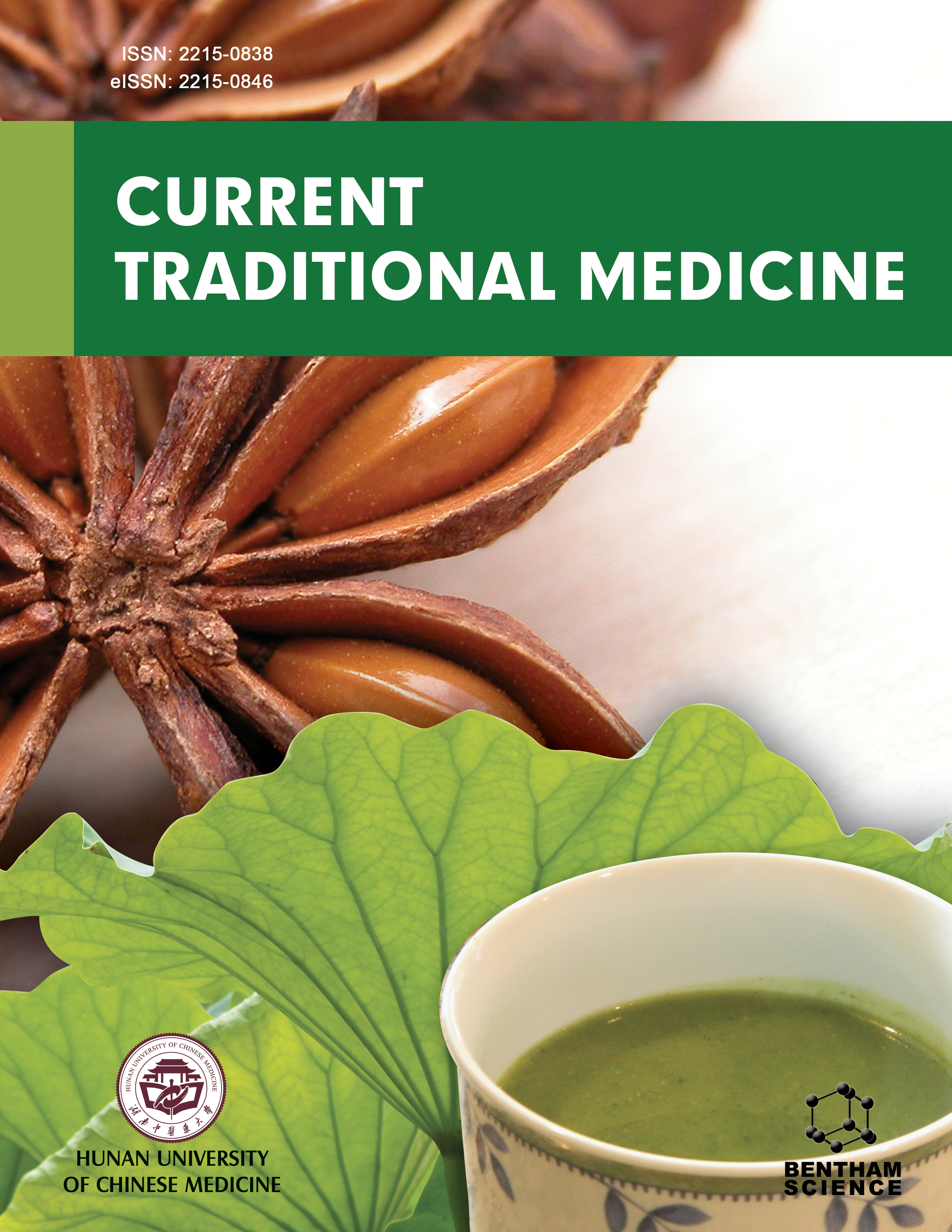- Home
- A-Z Publications
- Current Traditional Medicine
- Previous Issues
- Volume 9, Issue 3, 2023
Current Traditional Medicine - Volume 9, Issue 3, 2023
Volume 9, Issue 3, 2023
-
-
An Overview of Flavonoids: A Diverse Group of Bioactive Phytoconstituents
More LessAuthors: Vimal Arora, Navni Sharma, Mohammad Tarique, Govind Vyas and R.B. SharmaBackground: Flavonoids are phenolic compounds or plant constituents containing phenol ring and is also known as a polyphenolic compound. Flavonoids have remarkable antioxidant potential, but along with this, they also exhibit a variety of activities through various mechanisms. Flavonoids are classified into six different groups based on their chemical structures and these activities are owed to six different basic s Read More
-
-
-
Shwasananda Vati, a South Indian Traditional Herbo-Mineral Formulation: Insights on the Proposed Biological Roles, Safety, and Therapeutic Profile
More LessAuthors: Shrilata, Sanath Kumar T., Dileep Kumar and Rohit SharmaShwasananda vati (SV) is a South Indian traditional herbo-mineral formulation widely used in different parts of southern India, particularly in Kerala state. The formulation is documented in an ancient Kerala traditional treatise and is widely used as a treatment for respiratory ailments in both children and adults. The formulation is cited in an ancient Kerala traditional treatises and significantly used as a remedy for respiratory a Read More
-
-
-
The Potential Impact of Ayurvedic Traditional Bhasma on SARS-CoV- 2- Induced Pathogenesis
More LessAuthors: Pankaj Kumar, Remya Jayakumar, Manoj K. Dash and Namrata JoshiThe mass casualties caused by the delta variant and the wave of the newer “Omicron” variant of SARS-COV-2 in India have brought about great concern among healthcare officials. The government and healthcare agencies are seeking effective strategies to counter the pandemic. The application of nanotechnology and repurposing of drugs are reported as promising approaches in the management of COVID-19 disease Read More
-
-
-
Ethnobotanical Perspective in the Management of Obesity: An Updated Review
More LessAuthors: Sakshi Sharma, Manjusha Choudhary, Sunishtha Kalra, Divya Sharma, Anjna Rani and Vikas BudhwarBackground: Obesity has been increasing very rapidly over the past few decades in various developed countries affecting human health and producing various chronic disorders like diabetes (type 2), fat deposition in the liver, coronary heart disease, and atherosclerosis. Objective: Apart from the genetic and side effects of the drugs, nearly 80-90% of people become obese due to various behavioural factors, high caloric i Read More
-
-
-
Herbal and Ayurvedic Plants as Remedial Approach for Viral Diseases with Focus on COVID-19: A Narrative Review
More LessAuthors: Yashvita Joshi, Hema Rani, Gurpreet Kaur, Manish Kumar, Rakesh K. Sindhu, Ajay S. Kushwah and Roopal MittalBackground: Infectious diseases have posed a major threat to human survival for centuries and can devastate entire populations. Recently, the global outbreak of COVID-19 has increased exponentially, affecting more than 200 countries and millions of lives since the fall of 2019, largely due to the ineffectiveness of existing antiviral therapies. WHO announced it a public health emergency of international concern. A significant Read More
-
-
-
A Systematic Review on Sesamum indicum L.: Bridging Traditional Information and Pharmacological Indications for Future Translational Research
More LessAuthors: Shivam, Neetu Sachan and Phool ChandraBackground: Sesame (Sesamum indicum L., family: Pedaleaceae) is also known as Til, sesamum, beniseed, and sim-sim. Sesame is an herbaceous, tropical, erect, annually grown, and oldest oilseed plant. Sesame crop has been mainly cultivated in Asia, Africa, and different parts of the world for centuries. Objective: The aim of this systematic review on Sesamum indicum L is to bridge traditional information and pharmacological i Read More
-
Most Read This Month
Article
content/journals/ctm
Journal
10
5
false
en


